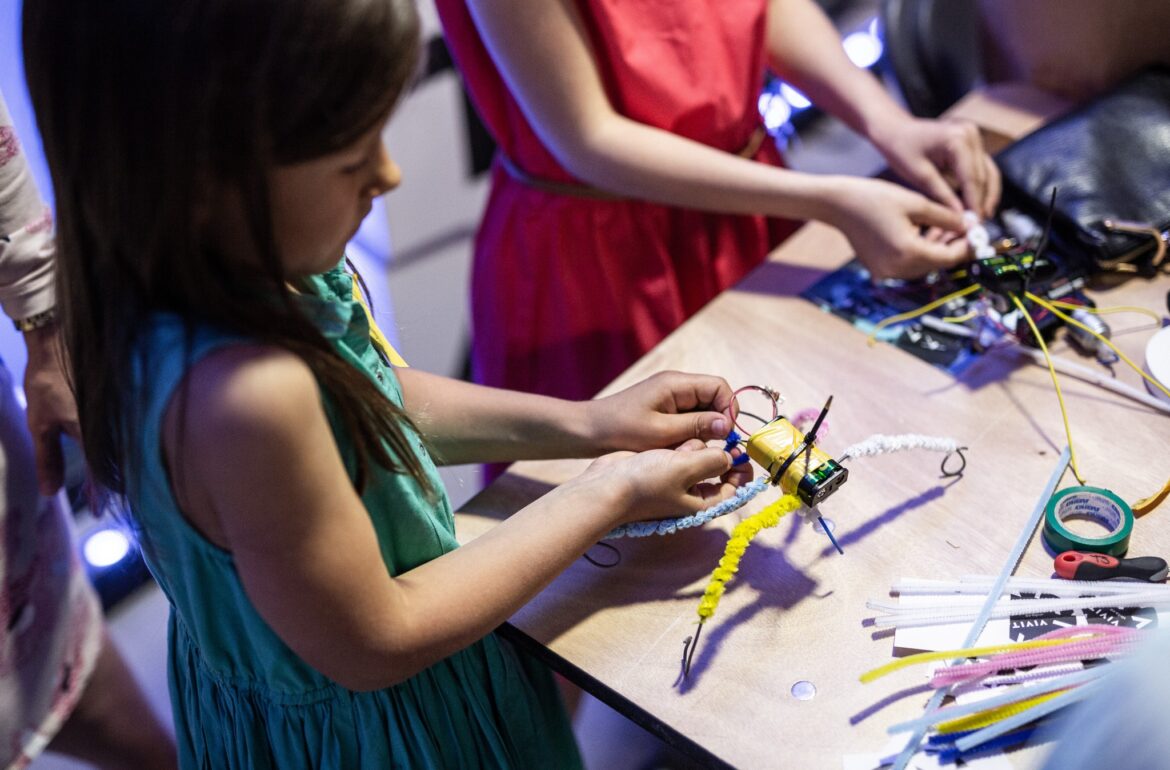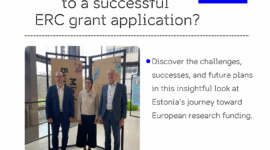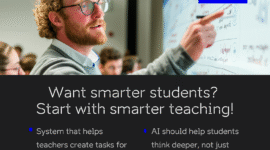In Estonia, known for quality education, thousands of teachers and hundreds of schools are already using technology and novel ways to teach children. Using learning analytics at the same time helps to make better decisions in education. This is an area where Estonia can function as a good example for other countries in Europe and beyond.
Tobias Ley, ERA Chair Professor for Learning Analytics and Educational Innovation, how did your project at Tallinn University start?
We have been doing research on how to integrate technologies into education for quite a long time. We have studied how to change teaching and learning formats with using technologies in schools, workplace settings and universities. Now we have this new field coming up which is called learning analytics. It means that you can use all the data from our Learning Analytics Toolbox to make better decisions in education for individual learners, teachers, institutions and maybe even for the whole national system. The idea was born at the Center for Educational Technology at TLU and then colleagues there wrote the application. That’s how our project “Cross-Border Educational Innovation through Technology-Enhanced Research (CEITER)” started – from very solid bases of prior research conducted at TLU previously.
What is in the focus of your Centre of Excellence in Educational Innovation?
We are focused on different levels. On the classroom level, when the students are, for example, exploring some new domain on the web or in a digital learning system, we give them better support in what they are doing. We also provide feedback for the teacher: what the classroom is doing and what is happening in the group conversations – are they on track or not. This allows teachers to make better guiding decisions. The schools get a better overview of their digital competence: if they need to adapt new approaches to learning, do they need investments and technology or teacher training. We also focus on the municipality level for better management of the schools.
Have these innovations already been implemented?
Yes, we have put a lot of effort into building systems that scales this research into practice in the schools, especially through teacher training programmes. We have created this format called EDULAB. The method is based on the popular Living Labs approach and focuses on building communities of teachers, researchers and other stakeholders. Together they are creating innovative learning scenarios (e.g. how to use robots or smartphones in science and maths), rolling them out in schools and analysing if and how well they work. We have cooperated with thousands of teachers and more than a hundred schools, so it has been broadly applied in all kinds of schools in Estonia.
What have been the major challenges during this ERA Chair project?
Connecting the research and practice. There’s a big gap between school and science worlds, because the things you discover in science can’t always be directly applied into practice. Furthermore, teachers and scientists think in different ways, and have different goals and objectives. Teachers are interested in things that can be immediately applied in the classroom. But as classrooms are very diverse, the solutions need to be adapted to individual circumstances. Researchers on the other hand are interested in finding evidence that generalizes across a large number of classrooms. This is why we created the EDULAB methodology which is already delivering good results.
For example, we have studied over 10,000 instances, where teachers have created new learning scenarios. When teachers collaborate with other teachers or adapt already existing scenarios, this dramatically increases the chance they’ll use these scenarios later in schools. These are the success stories we have seen so far. We are getting a better understanding of how the innovation process works in education.
What brought you to Estonia?
I have been here for nine years and the current ERA Chair project is a follow-on project from previous ones. I first came here to do research at the School of Digital Technologies. They had an opening for a professor position for digital learning technologies where I applied. I actually knew people from here before, we had written some proposals together and I had met them in summer schools. I had just finished my habilitation degree, which I did after a PhD degree to qualify for a professorship. Somehow, I found that it was the right time to see some other part of the world.
What do you think about the Estonian research landscape and how does it differ from Austria?
Yes, they are very different. Estonia is very dynamic and flexible, and it’s much easier to realize your good ideas here than in Austrian universities. Bureaucracy and the way how things are done here are more flexible. But there are also downsides. One very big downside is that 80% of the research is funded by projects, so there is no real stability. It’s very difficult to build up and maintain a solid research base, capacity and infrastructure, because you have to finance this from different research projects. That is a huge challenge.
We are very lucky to have this ERA Chair grant for five years. This stable funding helps us to build up the capacity for research. I think that Estonia could probably do a better job in making use of these ERA Chair investments. If these processes are not picked up on a national level, then much of the investment will be lost and people will go elsewhere.
I also find Estonian teachers and schools to be very open to innovation. They are very willing to cooperate with the university and to try out new things. Schools in some other countries are regulated very strictly and teachers don’t have much motivation to start research cooperation.
What developments could we see in the future of learning?
The technologies we have seen over the last few years enable learning to be more tightly integrated into our everyday lives. Having an education no longer means that a person should be in a school house. Instead, we will have more learning situations where technologies like smart phones connect us with other people and give us real-time information about our environment. Augmented or virtual reality could also help us in learning processes and this whole area will accelerate.
Artificial intelligence has been hyped in many other domains and it already has a profound influence on education. As there is a scarcity of teachers everywhere in the world, smart devices could do the teaching. This is something that needs to be discussed in society in order to have the best outcome. Our group sees it as a partnership where smart technologies support teachers. This is a big topic for the future, not only for education, but also for other professions.
Written by: Sven Paulus
This article was funded by the European Regional Development Fund through Estonian Research Council.
 Back
Back



